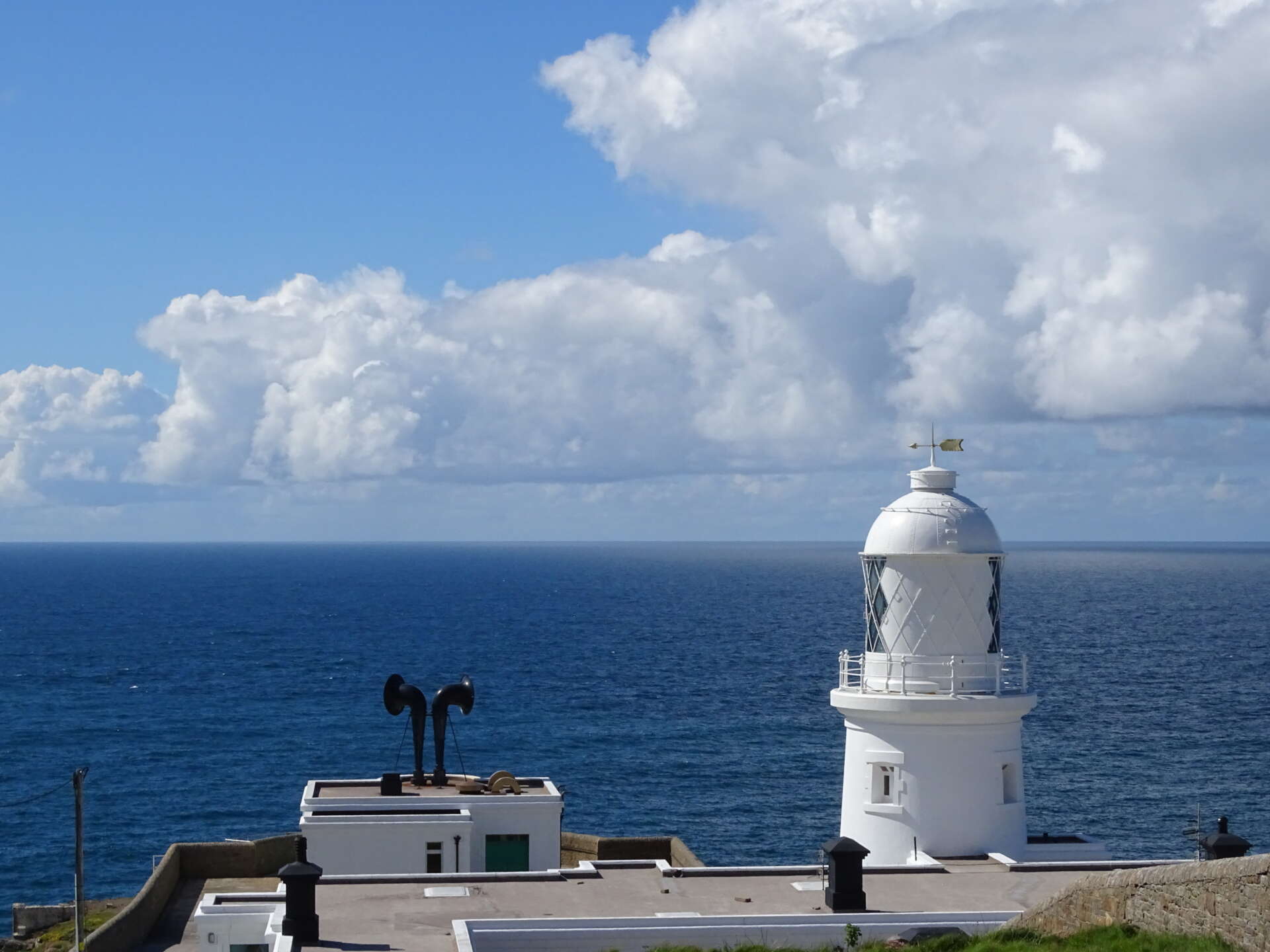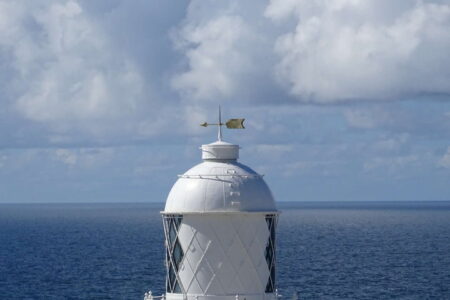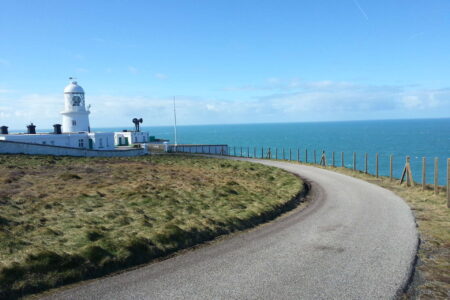“Between Land’s End and Pendeen Watch lies some of the most spectacular coastal scenery in Cornwall. Precipitous cliffs, gashed by deep zawns and guarded offshore by menacing rocks and reefs, tower bastion-like above the Atlantic surges which during winter storms burst against them in thundering fury.” Cyril Noall, 1968
Pendeen lighthouse was one of the last to be built in Cornwall. Completed in 1900 it was another link in the chain of illuminations designed to make the treacherous Cornish coast a little safer. The lighthouse was designed by the engineer in chief at Trinity House and then constructed by Arthur Carkeek of Redruth, who had to flatten the top of the headland before building work could begin.
As well as the main lighthouse building, with its 17m (56ft) high tower, four cottages were also built, one to house an office and the other three as accomodation for the keepers and their families. There was also a separate engine room for the fog horn and then all the buildings were corralled inside a tidy walled enclosure. The first light was lit and the horn sounded for the first time on 26th September 1900.
The Pendeen Watch
The Pendeen Watch, as it was also known, was a popular attraction in the years following its construction, attracting so many visitors that in 1905 Mr B. Andrews opened a tea rooms and lodging house close by specifically for day-trippers to the lighthouse. Tours to see it and the coastline of the Penwith ran regularly from Penzance in the summer months and it even became popular with bridal parties. The papers reported several newly-wedded couples visiting Pendeen’s lighthouse after the ceremony, presumably for pictures with the striking white tower in the background.
But even before the lighthouse was built this particular piece of clifftop was a favoured lookout point for local people for hundreds of years. According to the Cornubian & Redruth Times in 1868 the Pendeen Watch was famed as a spot from which you could watch the sun both rise and set into the sea on the longest day of the year.
Of course the main purpose of the Pendeen Lighthouse was to save lives at sea and this it most certainly did. The whole of the coast from Lands End to St Ives bay is beset by frequent storms and fog, and the high cliffs and zig-zagging shoreline often mean that both the Trevose Head Lighthouse and the Longships can be hidden from view. There had been numerous wrecks here over the preceding centuries but the new lighthouse became another invaluable navigational aid to shipping, a guiding light, deterring vessels from straying too close to the unforgiving coast and doubtless saving countless lives.



